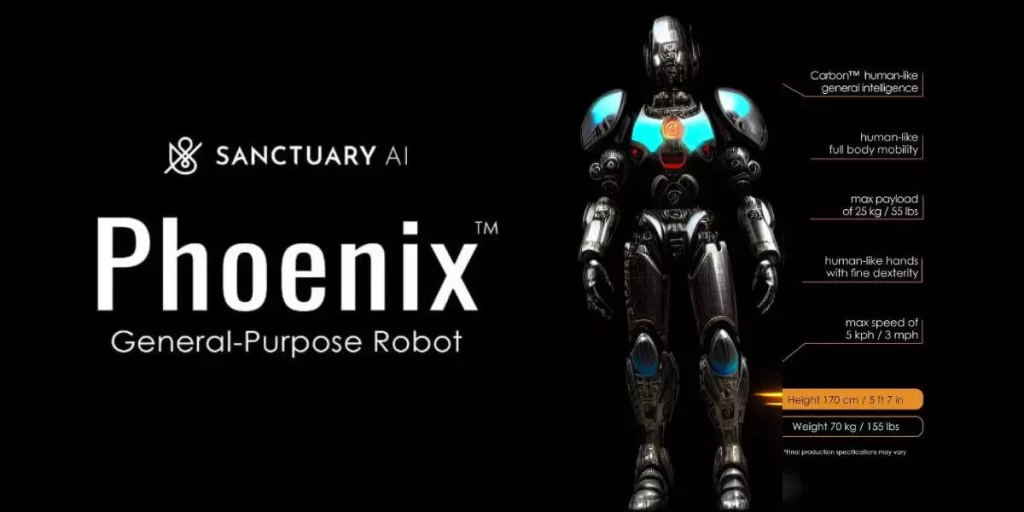Canadian company Sanctuary AI has unveiled its latest creation, Phoenix, a humanoid robot with artificial intelligence (AI) capabilities designed to perform a variety of work tasks.
Introduction
This new breakthrough in robotics is positioned as a milestone in the quest for human-like intelligence in general-purpose robots (GPRs). Let’s read more about it.
A humanoid robot with cutting-edge Artificial Intelligence
The Sanctuary AI team has surprised the tech world with the launch of Phoenix, a humanoid robot that promises to be the first to achieve human-like intelligence in the realm of general-purpose robots (although it is still years away from achieving such a thing).
While the humanoid form may not be the most efficient for a practical-purpose machine, it is perfectly suited to the tasks that a robot designed to replace humans must perform.
https://www.youtube.com/watch?v=k2GhgO7SnZQ
RPGs from companies like Tesla, OpenAI, Figure, and others have adopted this human form because the modern world is built primarily for bipedal creatures of a given height, with five-fingered hands and opposable thumbs.
This allows robots to easily integrate into diverse work environments and perform a wide range of human tasks.
Learning through Telepresence: An Innovative Approach
The learning approach used by Sanctuary AI is truly innovative. Through a telepresence system, a human operator controls the robot using a set of virtual reality and motion capture technologies.
The operator views what the robot sees through its cameras and senses what the robot “feels” through its sensors. As the operator performs the actions, the robot’s AI system observes, learns, and records motion patterns relevant to each task.
As the AI identifies these patterns, the robot develops a repertoire of actions relevant to the tasks at hand. Over time, the robot acquires the ability to perform these tasks autonomously.
The robot’s proficiency in over 110 retail-related tasks, including picking, packing, cleaning, labeling, folding, and more, was exemplified by its successful pilot at a Canadian Tire Corporation store.
The potential of Sanctuary AI robots and the Carbon platform
With the objective of performing tasks at par with human workers, Sanctuary AI has designed robots like Phoenix, which possess exceptional adaptability and flexibility.
This has been made possible through the development of the Carbon platform, which integrates telepresence learning, reinforcement learning, and cutting-edge artificial intelligence language models.
By utilizing Carbon, Phoenix can mimic human-like thinking and behavior, with the capability to plan, make decisions, and pursue goals.
Through this platform, Phoenix will eventually be able to carry on conversations and receive instructions in natural language, just like ChatGPT and other language models.
The Future of Work Robots
Although Sanctuary AI has made significant progress with its Phoenix robot, there is still some way to go to achieve true human-like artificial intelligence in terms of physical abilities and adaptability to physical targets.
Although AI language models, such as GPT, have demonstrated remarkable language control, the application of similar models to learn physical tasks is still under development.
However, as we move into the next era of robotics, AI-powered humanoids, such as Phoenix, are becoming a prominent trend in 2023.
Phoenix’s dexterity and hand skills make him a promising candidate for a variety of jobs regardless of his ability to walk.
The Sanctuary AI project represents an important step toward the future of labor robots. As technology continues to evolve, we can expect these robots to play an increasingly important role in various sectors of society, from industry and retail to home care and healthcare.
Follow us on our social networks and keep up to date with everything that happens in the Metaverse!.
Twitter Linkedin Facebook Telegram Instagram Google News

